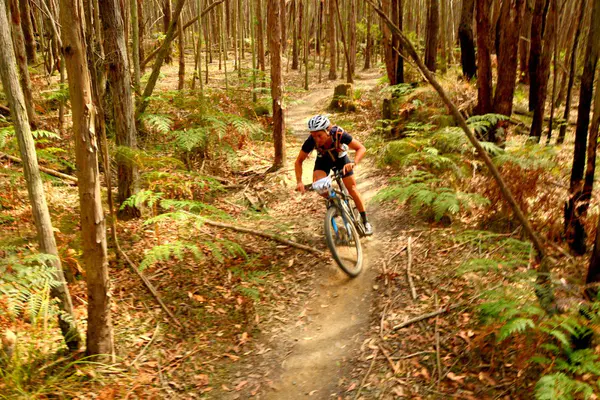Mountain biking is a thrilling sport. Riders often find themselves navigating steep descents, rocky trails, and challenging terrains. One term you might hear in the mountain biking community is “slacker.” But what does it mean when someone says a bike is “slacker”? In this article, we will explore the concept of “slacker” in mountain biking, focusing on bike geometry, specifically the head angle. We will discuss its implications on performance, riding style, and overall biking experience.
The Basics of Mountain Bike Geometry
What is Bike Geometry?
Bike geometry refers to the various measurements and angles that make up a bike’s frame. These measurements determine how a bike handles. They affect stability, agility, and comfort. The key components of bike geometry include the head angle, seat tube angle, wheelbase, and bottom bracket height.
Key Components of Bike Geometry
- Head Angle: The angle between the front fork and the ground. It influences steering and stability.
- Seat Tube Angle: The angle of the seat tube relative to the ground. It affects pedaling efficiency.
- Wheelbase: The distance between the front and rear wheels. A longer wheelbase provides stability, while a shorter one offers agility.
- Bottom Bracket Height: The height of the bottom bracket from the ground. It impacts the bike’s center of gravity and clearance.
The Evolution of Mountain Bike Geometry
Historical Perspective
Mountain bike geometry has evolved over the years. Early mountain bikes had steeper head angles and shorter wheelbases. These bikes were agile but less stable at high speeds.
Technological Advancements
Advancements in technology and materials have allowed for changes in bike geometry. Modern bikes feature slacker head angles, longer wheelbases, and improved suspension systems. These changes have enhanced performance, especially on challenging terrains.
What is a Slacker Head Angle?
Definition
A slacker head angle refers to a more relaxed or shallower angle between the front fork and the ground. This is typically less than 66 degrees.
Comparison with Steeper Head Angles
Steeper head angles (more than 66 degrees) offer quicker steering and are ideal for climbing. Slacker head angles provide stability and control, especially on descents and at high speeds.
Benefits of a Slacker Head Angle
Improved Stability
A slacker head angle increases the bike’s wheelbase. This enhances stability, making it easier to maintain control on rough terrains.
Enhanced Downhill Performance
Downhill riders benefit from a slacker head angle. It allows for better handling on steep descents and rough trails.
Better Handling at High Speeds
At high speeds, a slacker head angle provides more predictable handling. This makes it easier to navigate challenging trails safely.
Trade-offs of a Slacker Head Angle
Climbing Efficiency
A slacker head angle can make climbing less efficient. The front wheel may lift more easily on steep climbs, requiring more effort to maintain traction.
Overall Bike Performance
While a slacker head angle improves stability and control, it may compromise agility. Riders may find it harder to make quick, sharp turns.
Situations Where a Slacker Head Angle May Not Be Ideal
On flat or less technical trails, a slacker head angle might not offer significant benefits. Riders may prefer steeper angles for quicker handling.
Slacker Bikes in Different Disciplines
Downhill Biking
Downhill bikes typically have the slackest head angles. This design maximizes control and stability on steep descents.
Enduro Biking
Enduro bikes balance climbing efficiency and downhill performance. They feature moderately slack head angles.
Trail Biking
Trail bikes have more versatile geometries. They often have slacker angles than cross-country bikes but steeper than downhill bikes.
Examples of Popular Bikes with Slacker Geometry
- Specialized Stumpjumper: Known for its versatility and slack geometry.
- Santa Cruz Megatower: A favorite among enduro riders.
- Yeti SB165: Offers a very slack head angle for aggressive riding.
The Rider’s Perspective
How a Slacker Head Angle Affects Riding Experience
Riders often report feeling more confident on steep descents with a slacker head angle. The increased stability allows for a smoother ride.
Testimonials from Professional Riders
Many professional riders prefer slacker head angles for their stability and control. They highlight improved performance in downhill and enduro races.
See Also: How to Gain Confidence Mountain Biking
Tips for Adjusting to a Slacker Bike
- Practice on Various Terrains: Get used to the handling characteristics.
- Adjust Riding Position: Find a comfortable and efficient riding position.
- Consider Suspension Settings: Fine-tune suspension to complement the slacker geometry.
Choosing the Right Bike for You
Factors to Consider
- Riding Style: Choose geometry that matches your preferred riding style (e.g., downhill, trail, enduro).
- Terrain: Consider the types of trails you will be riding.
- Skill Level: Beginner riders may prefer more versatile geometries.
How to Test Different Geometries
- Demo Rides: Test bikes with different geometries to find what feels best.
- Consult Experts: Talk to bike shop professionals for recommendations.
- Read Reviews: Learn from other riders’ experiences.
Advice from Bike Experts
Experts suggest considering future goals when choosing a bike. If you plan to ride more challenging trails, a slacker bike might be a better investment.
Conclusion
Mountain bike geometry continues to evolve. Future designs will likely balance stability, control, and efficiency even better.Understanding bike geometry is crucial for choosing the right mountain bike. A slacker head angle can enhance your riding experience, but it’s important to consider your specific needs and preferences.

